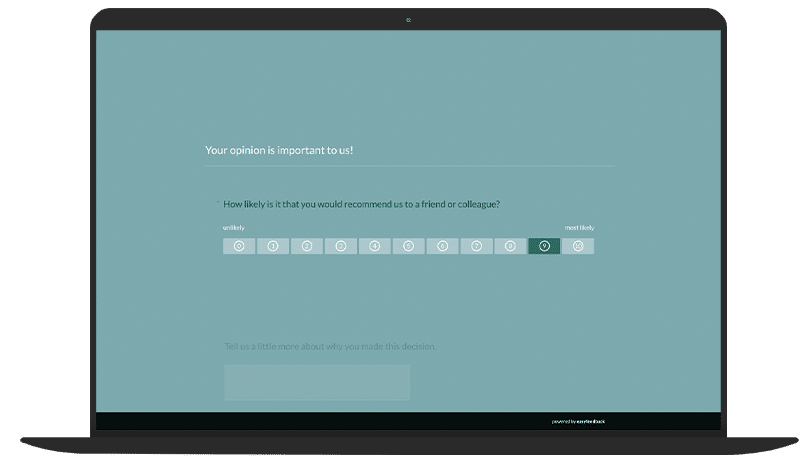Why measure customer centricity?
Customer centricity is a strategy that specifically aims to focus on the wishes, expectations and challenges of customers.
Measuring this focus is crucial because:
- Insights into the status quo can be gained.
- Potential for improvement is identified.
- The success of the measures is reviewed in order to remain competitive in the long term.
Key performance indicators for measuring customer centricity
1st key metric: Net Promotor Score
Measures the probability with which customers would recommend the company to others.
Direct indicator of customer satisfaction and loyalty.

2nd key metric: Customer Satisfaction Score
Evaluates customer satisfaction after a specific interaction or experience.
Provides direct feedback on products or services.
3rd key metric: Customer Effort Score (CES)
Measures how much effort customers have to make to solve a problem or achieve a goal.
A low CES indicates a simple and pleasant customer experience.
4th key metric: Customer Lifetime Value (CLV)
Calculates the total financial value that a customer generates during their relationship with the company.
High CLV indicates strong customer loyalty and effective customer centricity.
5th key metric: Customer feedback
Open questions and qualitative data offer deeper insights into the needs and wishes of customers.

6th key metric: customer churn rate
Shows how many customers have left the company within a certain period of time.
A low churn rate indicates good customer centricity.
Methods for measuring customer centricity
1st method: Data analysis
The analysis of customer interactions, purchasing behavior and support requests provides valuable information.

2nd method: Employee surveys
If you ask your own employees, you gain insights into their perception of customer centricity.
3rd method: Customer journey mapping
Visualization of the entire customer experience shows weak points and opportunities for improvement.
4th method: Social media monitoring
Analysis of customer opinions and feedback in social networks provides insights into public perception.
Challenges in measuring customer centricity
- Subjectivity: Customer centricity is often difficult to express in clear figures.
- Complexity: Collecting and analyzing data requires time and resources.
- Continuous adaptation: Customer needs change, which makes regular measurements and adjustments necessary.
Conclusion
Measuring customer centricity is essential in order to sustainably improve customer loyalty and satisfaction.
By using suitable metrics such as NPS, CSAT and CLV as well as data-driven methods, companies can make informed decisions and work on their customer centricity in a targeted manner.
Even though the process may be challenging, the benefits are immense: a strong customer focus creates loyal customers, strengthens the brand and ensures long-term success.
The path to customer centricity begins with a willingness to listen to customers and consistently align your own actions with their needs.


